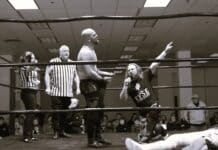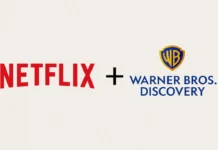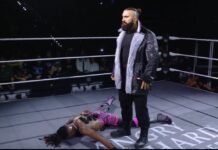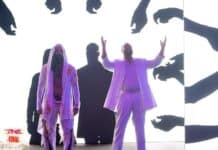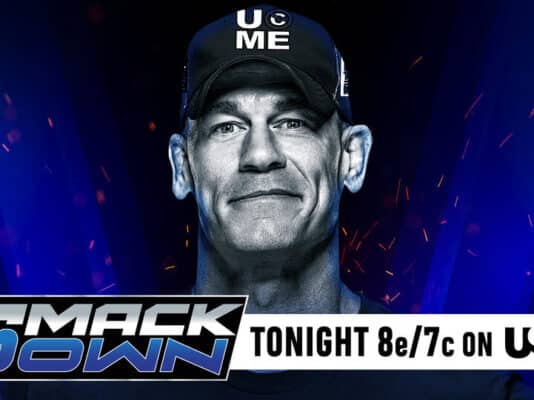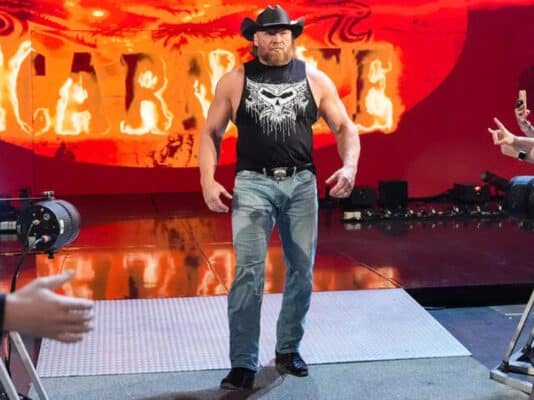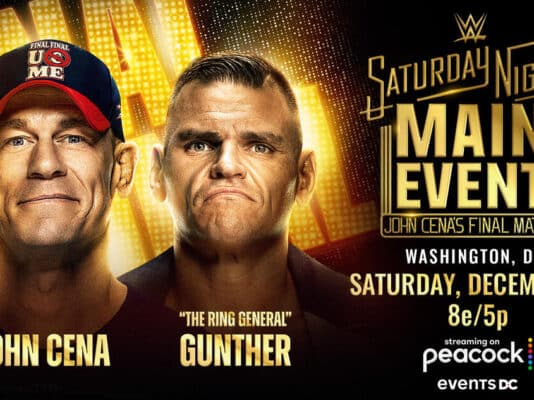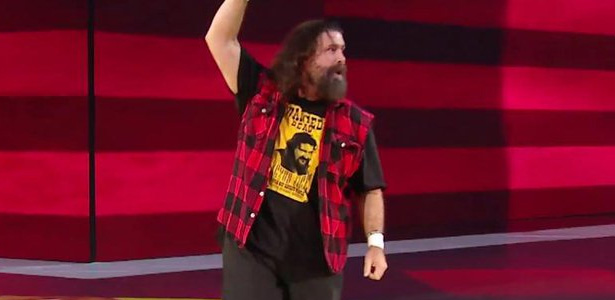
Ahead of this weekend‘s Summer Slam stadium show at Ford Field in Detroit, I wanted to take a look back at a key Summer Slam event, particularly before the company went PG when Linda McMahon ran unsuccessfully for Senate twice. The 2006 edition of the event was fresh off of the success of Mick Foley’s epic Wrestlemania match against Edge, and the doomed relaunch of ECW. Ironically, by the time this broadcast went on the air, the relaunch of Extreme Championship Wrestling had already begun to unravel. The previous month, newly-crowned WWE and ECW champion, Rob Van Dam was arrested for drug possession following a house show, and dropped both belts the following week. That change of plans ultimately had a major impact on the direction that the company took, which was seen throughout the lineup for this event.
The show kicked off with Chavo Guerrero, returning to the ring against Rey Mysterio for an angle that revolved around the death of Eddie Guerrero. I wrote at the time how tasteless and pointless the disparaging use of Guerrero‘s name was, but it’s even more disrespectful in retrospect. The match itself was fine, nothing spectacular, but nothing terrible either. However, the overwhelming narrative of the disrespectful use of Eddie’s name couldn’t help but be distracting. Vickie Guerrero, before she was the general manager, made her way down to the ring and accidentally knocked Rey off the ropes, costing him the match. Chavo got the victory, but in truth, there were no winners in this match or anyone that had to be involved in this angle.
The ripple effect of Van Dam’s drug arrest was seen early on the card, as he drop the title to The Big Show, who was extremely overweight at the time. Keep in mind, this was before he left the company for several months and came back in much better shape for the eventual Floyd Mayweather match at Wrestlemania in 2008. With Van Dam on the sidelines, Sabu was booked to challenge The Big Show for the ECW championship pay-per-view. For what this match was, it was entertaining. It was a sloppy brawl, but it worked. Sabu had some cool table spots that you’d expect from him. On the other hand, despite the match only going about seven minutes, Big Show was completely blown up about halfway through the contest. The Big Show got the win when he intercepted Sabu and choke slammed him through a table. It looked like a nasty bump and made for a solid finish. Again, for a seven-minute brawl with the tables and chairs to camouflage some of the physical imitations of The Big Show, this was a decent contest. But, the overwhelming take away was how out of shape Big Show was, and the time he took off was definitely needed for him to get back into the proper ring shape.
The third match on the card was a topic of controversy and actually the final WWE match of Hulk Hogan‘s career. As we know, during the reality TV show boom of the mid-2000s, Hogan Knows Best made headlines, eventually for all the wrong reasons, but in the months leading to Summer Slam, the show was doing well in the ratings, and Hogan was discovered by a new generation. On the surface, it makes sense for the WWE to capitalize on the success of one of the stars that the company made a household name, and at the same time it gave further promotion of the reality show so it was a win-win for everyone. However, not surprisingly, when Hogan was initially booked to lose the match, he conveniently suffered a knee injury that might’ve kept him off of the pay-per-view. Amazingly, Hulk’s knee healed up as soon as the finish was changed to him beating the younger star. It goes without saying, this was put third on the card minimize the amount of spotlight, Hogan was given, especially when he wasn’t willing to do the job for one of the featured young talents on the roster. The bout itself was fine, with Hogan avoiding taking any bumps, the exception of a dropkick from Orton that sent The Hulkster to the canvas. Outside of that, Hogan would lean against the ropes and sell off the ropes, but didn’t leave his feet much even when Orton was on offense. At one point, Orton got a pin, but Hogan’s foot was on the ropes. With the finish obvious, Hulk hit the boot and dropped the leg on Orton. As much as Hogan usually insisted on winning, this might’ve finally been one step too far even for him. Considering his age, he didn’t really have the cachet to insist on going over when Orton quite literally was being pushed to be one of the top stars for the next 15 years. I’m just speculating, but I think his decision to refuse to put Orton over is partially why the company never offered him an official retirement match. That being said, this almost forced the evolution of Orton’s character because the video package prior to the match was focused on the legend killer gimmick, but if he couldn’t defeat, the top legend of the previous era then there was really no well nowhere else for the character to go. Either way, when you see the name Hulk Hogan on the card, you expect more than just a basic mid-card match at the pay-per-view.
The Ric Flair vs. Mick Foley I Quit match was actually why I picked this event to review and it was even more violent than I remember. Keep in mind, less than two years later the violence in the promotion is scaled back, and blood is absolutely prohibited. There was a really good video package before this segment started to review the feud, which isn’t surprising, given the WWE’s state-of-the-art production. The match was absolutely brutal. Flair took a bump into the thumbtacks and had them sticking all over his body. There was a grotesque amount of tacks in his arms and legs, even as the match continued. Some of the graphic barbwire spots were just nasty. Both Flair and Foley bled buckets, with Mick getting lacerations on his chest from Barbwire chops. Foley also took the Nestea plunge from the apron to the floor, partially smashing into a garbage can, but it looked to be a particularly rough bump because he didn’t get quite as much height as he had previously and seem to go directly into the concrete. The finish came when Melina ran down to the ring to save Mick from Flair, who had a barbwire bat. Flair looked like as if he was going to attack Melina, which prompted Foley to quit to save her. This angle eventually played out with Melina turning heel on Foley during a segment with a Vince McMahon on Raw. Considering Melina didn’t became a main star in the company until a few years later, it appears that this original storyline didn’t go as planned. In fact, Mick penned his third autobiographical book, The Hardcore Diaries and expressed his frustration about this portion of his WWE career. Still, you could make the argument that at least on this show the feud worked and the match arguably stole the show.
Unfortunately, the World Heavyweight title match was put in a tough spot because after the blood, barbwire, and bumps, they were expected to have a traditional wrestling match. The bottom line is, this was a rather subpar match. Batista had just returned from an injury so perhaps this one could be chalked up to ring rust, but Booker T didn’t seem to be at the top of his game either. This was a very slow paced and lumbering contest, which was further exposed because it was booked after the hardcore match. It didn’t do this segment any favors when the conclusion of the contest was a disqualification when Queen Sharmell get involved to save Booker’s championship. Outside of the fact that this match wasn’t given a favorable position on the card, the finish was totally flat and did nothing to help with the quality of the match.
Vince and Shane McMahon vs. DX was more of a segment than an actual match. The Spirit Squad and a collection of heels interfered on McMahon‘s behalf. So there wasn’t the back-and-forth action you would usually expect from a pay-per-view match because it was more about the narrative of if the extended beat down from the heels was enough to give Vince and Shane the advantage to get the win. Eventually, DX made a basic, but effective comeback that had the crowd reacting to each spot to get the win. There wasn’t really anything ground-breaking from this DX reunion, but they were definitely over with the crowd.
Going back to Van Dam’s arrest and subsequent loss of the WWE championship, Edge was the one that won the title on Raw the following week. As far as matches go, this was the John Cena/Edge match you would’ve seen before in terms of structure, but that’s not a negative, as it was quality match with a lot of action. Everything was crisp and the back-and-forth narrative built toward the finish. Since Cena had dropped the title to Van Dam just two months earlier, it made sense for the office to go with Edge since 2006 was a pivotal year in his career. The conclusion saw Edge use a pair of brass knuckles to get the win.
Overall, this was a solid pay-per-view and as mentioned, this was one of the rare times that hardcore matches were booked before the switch to the PG product. While kendo sticks and tables get overused today to provide some sanitized hardcore action, the Flair/Foley bout was truly a gruesome showcase that still holds up today. Other than the subpar Batista/Booker T contest, there wasn’t really a lackluster match on the card. Everything else was at least decent or good, depending on what the segment was designed to accomplish. It was definitely interesting to see the evolution of the product through the PG era changed the presentation of the company.
What do you think? Share your thoughts, opinions, feedback, and anything else that was raised on Twitter @PWMania and Facebook.com/PWMania.
Until next week
-Jim LaMotta
E mail [email protected] | You can follow me on Instagram, Facebook, & Threads @jimlamotta89

